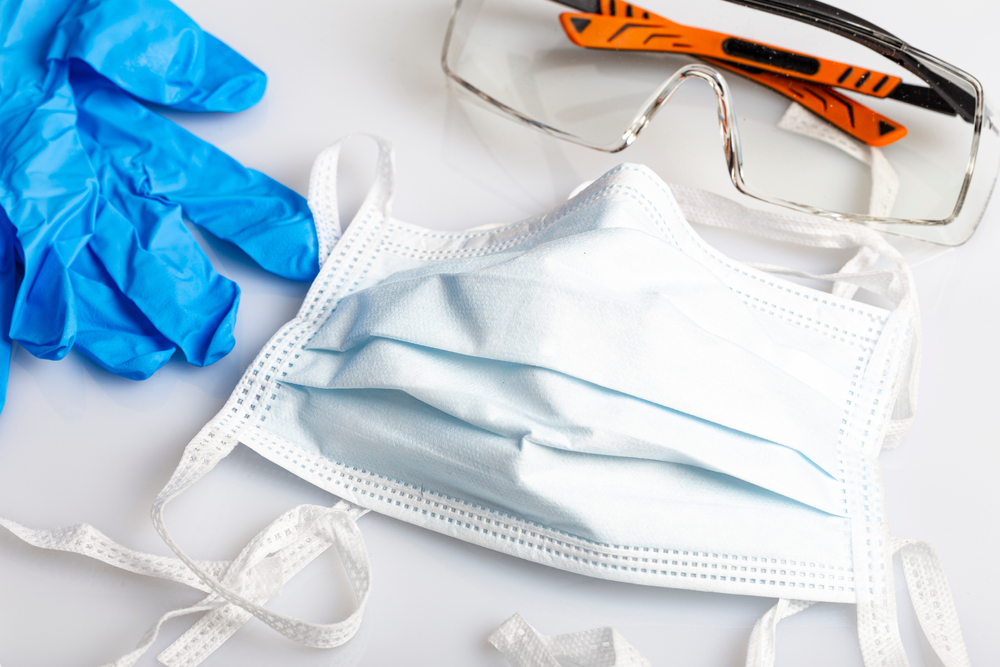All businesses need to take employee safety into consideration, now more than ever before. With the lingering concerns over COVID-19, worker health is currently of paramount importance, regardless of industry. However, as all lab managers know, scientific agencies can be especially hazardous, even under normal circumstances. Therefore, in any lab setting, safety is a central priority.
One indispensable means of preserving employee health and safety is with personal protective equipment, or PPE. These are the fundamental barriers which inhibit the transmission of hazardous, toxic or microbial agents. They protect lab personnel. Like fan and filter units, they’re a reliable tool for eliminating dangerous scenarios. As a result, it’s imperative to know the correct protocol for cleaning, disinfecting and sanitizing essential lab PPE. In this post, we’ll explore the proper practices for disinfecting basic laboratory PPE.
Gloves
Of course, no lab PPE is more common than gloves. In fact, regardless of biosafety ratings or hazards, the vast majority of labs enforce compulsory glove policies. Therefore, if you’re a lab employee, you most likely wear gloves at all times when working. However, there are still some labs (and administrators) unfamiliar with effective cleaning, sterilizing and sanitation practices for reusable gloves.
Have your employees wash their gloves (while wearing them) with degreasing liquid soap and water (or a detergent solution) for about one minute. As they wash, they should make sure to work up a thick, robust lather in order to purge any bacteria or microbes on the gloves’ surface. Next, they should rinse them adequately, wipe them completely dry with paper towels, and store them in an intact plastic bag.
Then, they should clearly label the bag with their name so no pairs are accidentally exchanged. Only that employee whose name is on the bag should use the gloves throughout any and all future work endeavors.
Aprons
Like gloves, you should assign individual aprons for each worker’s exclusive use and avoid sharing to avoid contamination. First, workers should cleanse the apron using a paper towel or clean cloth with lots of soap and rinse with a water-damp cloth. Next, once the entire surface is adequately clean, wipe it completely dry. Using disinfectant wipes, they should wipe it again, making sure to clean the entire apron.
In addition, it’s important to ensure the entire surface is wet with disinfectant for at least one minute to eliminate all of the germs present. The apron can either air dry or dried with a clean, absorbent towel.
Face Shields
Begin cleaning a face shield by using a clean cloth to wipe the shield with degreasing soap and water. Take care to clean the shield thoroughly from the interior to the exterior. Next, rinse it and then quickly remove any excess water. Then, using one disinfectant wipe at a time, or spray disinfectant, sanitize the shield’s interior.
Then continue to the exterior, cleaning the foam band, strap exterior, and visor. As with aprons, make sure all surfaces remain wet with disinfectant for at least one minute (or applicable contact time). Allow to dry (air dry or use clean absorbent towel).
Conclusion – SEPS
At SEPS, we’re no strangers to the fundamentals of lab safety and employee health. Preserving rigorous standards of sanitation and decontamination has always been essential aspects of our services. With our numerous accreditations and affiliations, we’re certified by industry-leading agencies to deliver premium lab services that will keep your facility clean, safe and productive.
